- Home
- Ramachandra Guha
Verdicts on Nehru Page 2
Verdicts on Nehru Read online
Page 2
Lal Krishna Advani: ‘We are opposed to Nehruvian secularism. We accept Gandhian secularism. Nehru started off with the assumption that all religions are wrong. For Gandhi, all religions are true, and they are different paths to the same goal. We thought many of Gandhi’s political policies were not sound, but we accepted his idea of secularism.’
Ashok Mitra: ‘Nehru turned the meaning of secularism upside down. Secularism, he thought, was embracing each religion with equal fervour. And which he exemplified by frequent visits to mandirs and mosques, to dargahs and gurdwaras, to churches and synagogues. But once you embark on this slippery path, you end up identifying the state’s activities with religious rituals such as bhumipuja and breaking coconut shells to float a boat built in a government workshop. This was inevitable because since Hindus constitute the majority of the state’s population, Hindu rituals came to assert their presence within state premises.’
Which of these assertions is correct? Did Nehru hate all religions equally, as Mr Advani suggests? Or did he love all equally, as Dr Mitra claims? Perhaps it does not really matter. Perhaps these statements tells us less about Nehru’s actual beliefs (or policies), and more about the political preferences of his contemporary critics. On the one side, there is Mr Advani, who considers ‘Hindutva’ the most promising political movement in modern India—and worries why it has not progressed further. Whom does he blame? Nehru. On the other hand, Dr Mitra considers Hindutva to be the most pernicious political movement in modern India—and is angry that it has progressed so far. And whom does he blame? Nehru.
It would be intriguing to develop the Advani/Mitra contrast in other directions. Consider thus their likely views on economic and foreign policies. Mr Advani probably thinks that the Nehruvian epoch was characterized by excessive state intervention; Dr Mitra certainly believes that the state did not intervene enough. Mr Advani holds that, in the formative decades of the 1950s, India aligned too closely with the Soviet Union; while Dr Mitra thinks that we did not cosy up to Moscow enough. Mr Advani must believe that Nehru did not do enough to promote the cause of the Hindi language; Dr Mitra most likely holds that he did too much.
For both Mr Advani and Dr Mitra, their political project is best defined negatively: as the repudiation of the economic and social philosophy of Jawaharlal Nehru. Lifelong political adversaries though they may be, the left-wing Indian and the right-wing Indian are joined in a lifelong fight against a common enemy—Father.
IV
Jawaharlal Nehru’s posthumous reputation brings to mind a remark of the nineteenth-century British radical, Edward Carpenter. Carpenter claimed that ‘the Outcast of one Age is the Hero of another’. He clearly had himself in mind, an environmentalist and prophet of sexual liberation ahead of his time. But the case of Jawaharlal Nehru shows that the opposite can equally be true. That is, the Hero of one age can very easily become the Outcast of another.
Why has Jawaharlal Nehru’s reputation fallen so far and so fast? One reason is that as the first and longest-serving prime minister, he was in a unique position to shape his nation’s destiny. He did a great deal, but there is always the feeling that he should have done more—much more. And modern middle-class Indians are, as a rule, very judgemental, especially when it comes to passing judgement on dead politicians. As his biographer S. Gopal once pointed out, Nehru’s ‘very achievements demand that he be judged by standards which one would not apply to the ordinary run of Prime Ministers; and disappointment stems from the force of our expectations’.
Allied to this is Nehru’s nearness to us in time. We live in a world shaped by him and his colleagues. And no modern man has had such an authoritative influence on the laws and institutions of his country. Adult suffrage, a federal polity, the mixed economy, nonalignment in foreign policy, cultural pluralism and the secular state—these were the crucial choices made by the first generation of Indian nation-builders. The choices were made collectively, of course, but always with the consent and justification of one man above all—Jawaharlal Nehru. So when Indians today meet to deliberate over them, they single out one man above all for approbation or denunciation. Questions that can be posed in the plural tend to be posed in the singular—instead of asking why the Indian state chose to be secular rather than theocratic, we ask why Nehru did so.
To illustrate how anachronistic these judgements are, consider only the claim that Nehru ‘imposed’ a socialist economic model on India. In fact, there was a widespread belief that a poor, ex-colonial country needed massive state intervention in the economic sphere. In 1944, the leading industrialists issued a ‘Bombay Plan’ that called for the state to invest in infrastructure and protect them from foreign competition. This plan, signed by J.R.D. Tata and G.D. Birla, among others, approvingly quoted the claim of the Cambridge economist A.C. Pigou that socialism and capitalism were ‘converging’ and that a dynamic economy needed to mix the best features of both. When, ten years later, the draft of the Second Five-Year Plan—the manifesto, so to say, of the heavy industry strategy finally adopted—was shown to a panel of twenty-four top Indian economists, twenty-three supported it. Behind the mixed economy model, therefore, was a massive consensus, one shared by economists, technocrats, politicians and, not least, industrialists.
It is less than fifty years since Nehru died. Since Indians still live with the consequences of decisions taken by him and his colleagues, some of them presume that they could have taken better decisions. And so they pass judgements on Nehru the like of which they would never pass on other Indian rulers, on (say) Akbar or even Lord Curzon. Of course, the judgements are anachronistic, made on the basis of what we know in 2010 rather than what Nehru knew in 1950. That does not stop them being made. Far from it. Over the years, I have spoken often about Nehru to audiences in different parts of India, to audiences composed variously of businessmen, students, scholars and activists. Everywhere, I have met people who know that they could have done Nehru’s job better than he did it himself; that is, they know that they could have ‘saved’ Kashmir for India, taken the country onto a 10 per cent growth path from the 1950s itself, solved the Hindu–Muslim problem, eliminated corruption in government, and brought peace with our neighbours. How foolish of us not to have elected them all as prime minister!
A third reason for the fading of the Nehruvian sheen is political, namely, the decline of Congress hegemony. The debunking of Nehru began with the coming to power of the Janata Party in 1977. Since then, the Congress has steadily lost ground in both the Centre and the states. There have now been as many as eight non-Congress governments at the Centre; and more than fifty such in the states. The composition of these governments has been non-Congress; their beliefs and practices, often anti-Congress. In the realms of politics, economics, culture and the law, these groupings have promoted ideas often sharply opposed to those that Nehru stood for. While the opponents of the Congress were out of power, their ideas had little salience or popularity; but now that they are in power, the ideas themselves have power—as well as influence.
A fourth reason for the fall of Nehru’s reputation lies in the misdeeds of his family. What we have here, as the sociologist André Béteille has pointed out, is the reversal of a famous biblical injunction. Instead of the sins of the father being visited on his children, for seven successive generations, in Nehru’s case the sins of the daughter and grandson (and now granddaughter-in-law and great-grandson) have been visited upon him.
Perhaps the greatest paradox of modern Indian history is that every act of Nehru that nurtured a liberal democratic ethos was undone by his own daughter. He promoted a political opposition, she squelched it. He respected the press, she muzzled it. He allowed autonomy to the executive, she preferred to rely on ‘committed’ civil servants and judges. His Congress was a decentralized, democratic organization, her Congress was a one-woman show. He kept religion out of public life, she brought it in.
Like his mother, Rajiv Gandhi was a politician of limited mental ability but with an unri
valled capacity for cronyism and manipulation. His regime further undermined the institutions and procedures of liberal democracy. In recent years, Sonia Gandhi has likewise perverted public institutions by appointing friends and cronies to head them. In this she, like her husband and mother-in-law before her, has violated Nehru’s own practice of respecting the autonomy and dignity of state institutions.
As an earlier essay in this book documents, Nehru had nothing to do with the ‘dynasty’. After his death in May 1964, the Congress chose Lal Bahadur Shastri to become prime minister, a post on which he quickly stamped his authority. Mrs Gandhi herself may never have become prime minister had not Shastri died unexpectedly. She was chosen by the Congress bosses as a compromise candidate who—they thought—would do their bidding. But once in office, Mrs Gandhi converted the Indian National Congress into a family business. She first brought in her son Sanjay and, after his death, his brother Rajiv. In each case, it was made clear that the son would succeed Mrs Gandhi as head of Congress and head of government. Thus, the ‘Nehru–Gandhi dynasty’ should properly be known as the ‘(Indira) Gandhi’ dynasty. But blood runs thicker than evidence; and when political commentators persist in speaking knowingly of the ‘Nehru–Gandhi dynasty’, why will the public think any different?
A fifth reason we Indians tend to give Nehru less credit than his due is that he appears to have lived too long. Lord Mountbatten once claimed that if Nehru had died in 1958, he would have been remembered as the greatest statesman of the twentieth century. Writing in 1957, Escott Reid remarked that Nehru’s ‘tragedy may be the tragedy of [Franklin Delano] Roosevelt: to remain leader of his country for a year or two after he has lost his grip and thus damage his own reputation and his country’s interests’.
This was astonishingly prescient. For, it was after 1957 that the clouds began to descend on Nehru. In 1958, there was the Mundhra scandal, the first signs of serious corruption in government; in 1959, the unfortunate dismissal of the Communist government in Kerala; in 1960, rising tension on the China border; in 1961, the conquest of Goa (which marred both Nehru’s non-alignment policy and his professions of non-violence); in 1962, the disastrous war with China. These setbacks emboldened the critics to speak of the other failures of Nehru’s regime: such as the continuing conflicts in Kashmir and Nagaland, the lack of attention to primary education, the hostility to business, the failure to effect land reforms.
Finally, Nehru’s posthumous reputation has also suffered from the neglect of scholars and scholarship. There is an intriguing contrast here with Mahatma Gandhi. In his lifetime, Gandhi was looked down upon by intellectuals who, even when they admired his ability to move the masses, thought little of his ideas, which were so completely alien to, and often at odds with, the progressive currents of the day. But after his death the intellectuals have rediscovered Gandhi with a vengeance. In Nehru’s case the trajectory has been exactly the reverse; while he lived, the cream of the world’s intelligentsia crowded around him, whereas after his death they have left him alone.
This contrast is starkly manifest in the continuing production of books about the two men. Thus, the best Indian minds have thought deeply about Gandhi—consider here the fine recent studies on the Mahatma by Ashis Nandy, Bhikhu Parekh, Rajmohan Gandhi, and others. So have some able foreign minds—as for instance, Denis Dalton, David Hardiman, J.T.F. Jordens and Mark Juergensmeyer, all authors of insightful works on Gandhi and Gandhian thought. By contrast, a cast of rather ordinary Indians have written somewhat superficially about Nehru. And we can say the same about the foreigners. For, none of the works on Nehru that now pour off the presses remotely match, in empirical depth or analytical insight, the far older works of Sarvepalli Gopal and Walter Crocker.
I do not mean here to overestimate the power of the printed word. Popular ideas about Nehru will continue to be shaped by propaganda and political prejudice rather than by solid scholarship. Still, had there been a slew of sensitive, empathetic, elegantly written books on Nehru—comparable to those on Gandhi—this might have promoted a more nuanced understanding of the colossal range of problems Nehru had to confront—a range unprecedented in the political history of the modern world—and allowed for a more healthy appreciation of Nehru’s achievements.
V
This essay is about the rise and fall of Jawaharlal Nehru’s historical reputation, but I cannot resist the temptation to pass at least a provisional judgement on Nehru’s historical role. For, as it happens, I have spent much of the past decade studying the India of the 1950s and ’60s. I have been reading private papers and government reports, memoirs and contemporary journals, accounts by anthropologists and political scientists. One man, Jawaharlal Nehru, laid his definitive stamp on those years. How, then, does a historical analysis of what he actually did compare with the criticisms and revisions of the present day? What follows is one historian’s answer.
First, Nehru was without question the chief architect of our democracy. It was he, more than any other nationalist, who promoted universal franchise and the multi-party system. He respected other Congressmen and Opposition leaders, and honoured the freedom of the press and the independence of the judiciary.
Second, Nehru had the unique idea of staying non-aligned in a Cold War that was forever threatening to turn Hot. His policy allowed a newly independent, desperately poor, and still vulnerable country room to manoeuvre, and to take economic aid from both sides. This independence also allowed India, and Nehru, to play an important mediating role in critical international conflicts such as Korea and Vietnam.
Third, while it is now fashionable to attack Nehruvian economics from the free-market point of view, his views in this respect were not singular, but representative of a wide spectrum of intellectual and scientific opinion. There was a solid consensus behind the idea of the mixed economy. In any case, Nehru’s economic policies have not been altogether unsuccessful. They have built a decent industrial base, helped assure self-sufficiency in food, and have created a pool of technically skilled manpower that has fuelled the recent software boom.
Fourth, Nehru built on the inclusive idea of India framed by Tagore and Gandhi before him. He worked hard to bring women and low castes into public life. He worked overtime to integrate and respect the minorities. It is a striking (if now little-noticed) fact that his period as prime minister was largely free of communal riots.
Set against these manifest contributions, of course, are some notable failures. In the realm of domestic politics, Nehru need not have let his fellow Congressmen persuade him to dismiss the Kerala Communist government in 1959, an act which was wrong in itself and set an unpleasant (and since much-abused) precedent. In foreign policy, he should have been more alert to Chinese adventurism and more critical of the Soviet invasion of Hungary in 1956. As for his economics, he could have listened more to socialists who advocated rapid land reforms and to Gandhians who preached environmental sustainability.
Nehru’s critics often focus on failures that were more imaginary than real. The emphasis on planning that free-marketeers now decry was favoured, as we have seen, even by the industrialists of the time—they thought the state should invest in infrastructure, and protect them from foreign competition. Patriots and jingoists blame Nehru for the clash with China—but, as we shall see in the next essay, this conflict was structural rather than personal, with two great civilizations coming out of colonial rule, seeking to find their way in the world, and rubbing against one another in the process.
The one failure of Nehru’s that one cannot contextualize, historicize, or euphemize was with regards to primary education. That is something Mahatma Gandhi would have emphasized, as the first and fundamental duty of a newly independent nation. In the 1940s and 1950s, India had a large reservoir of social capital, in the form of an idealistic middle class groomed by the independence movement. If we’d put them to work on schooling everyone, as was done in nineteenth-century Europe or other ex-colonial countries like Cuba or Vietnam, we’d have b
een in a different position today.
Still, all things considered, Nehru was, in more senses than one, the builder of Indian democracy. Crucially, he respected social diversity as much as democratic procedure; thus his refusal to reduce India or ‘Indianness’ to a dominant religious or linguistic ethos. Nowhere is this more poignantly illustrated than in an exchange of letters between Nehru and Vallabhbhai Patel immediately after Independence. The refugees pouring in from west Punjab were calling for retribution against the Muslims who remained in India. Their voice was loud, and for many, compelling. But Nehru told his home minister and close co-worker that it must be quelled: for, India, if it was anything at all, was emphatically not Pakistan. Over there, they might ill-treat or persecute their minorities; over here, we would protect and respect ours. There was, wrote Nehru to Patel, ‘a constant cry for retaliation and vicarious punishment of the Muslims of India, because the Pakistanis punish Hindus. That argument does not appeal to me in the slightest.’ For, India was not a mirror image of Pakistan, a Hindu state to its Islamic state. ‘Our secular ideals,’ insisted Nehru to Patel, ‘impose a responsibility to our Muslim citizens in India.’
But Nehru was catholic with respect to more than matters of faith. Altogether, he was the least chauvinistic of political leaders. Like the Mahatma, he transcended the divisions of race and religion, caste and class, gender and geography. He was a Hindu who was befriended by Muslims, but also a Brahmin who did not observe the rules of caste, a north Indian who would not impose Hindi on the south, a man who could be trusted and respected by women.
It is true that Nehru could appear superior, not least to his colleagues in party and government. They did not share his cosmopolitan outlook, nor his interest in art, music, literature or science. But no one did more than Nehru to nurture the values and institutions of democracy in India. Vincent Sheean once pointed to ‘one overwhelming difference between Mahatma Gandhi and Mr. Nehru: the Mahatma would rather retire, fast, pray, take care of lepers and educate children, than go along with a majority opinion in which he could not concur’. Nehru, on the other hand, had in many instances ‘yielded to the majority of his party and of the country . . .’ Thus Congress chief ministers were always elected by the legislators of the state concerned, regardless of Nehru’s opinion on the matter. And once he saw that both party and country wanted it, Nehru yielded to the formation of linguistic states—a policy he was personally opposed to.

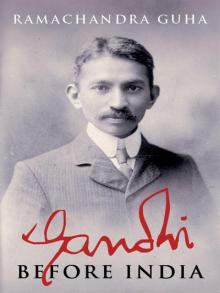 Gandhi Before India
Gandhi Before India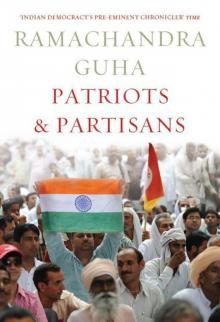 Patriots & Partisans
Patriots & Partisans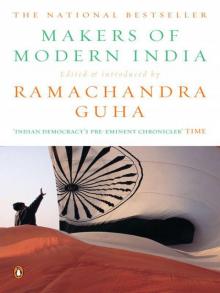 Makers of Modern India
Makers of Modern India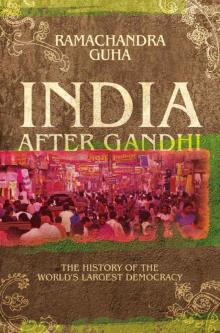 India After Gandhi: The History of the World's Largest Democracy
India After Gandhi: The History of the World's Largest Democracy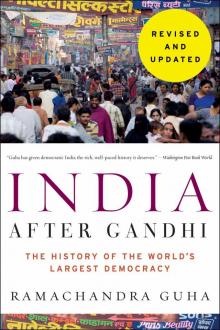 India After Gandhi Revised and Updated Edition
India After Gandhi Revised and Updated Edition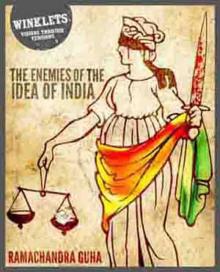 The Enemies of the Idea of India
The Enemies of the Idea of India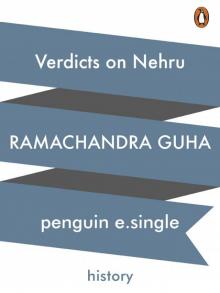 Verdicts on Nehru
Verdicts on Nehru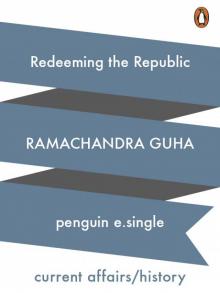 Redeeming the Republic
Redeeming the Republic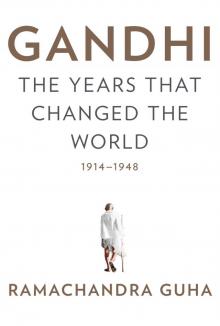 Gandhi
Gandhi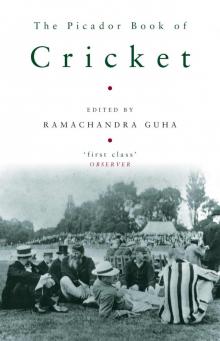 The Picador Book of Cricket
The Picador Book of Cricket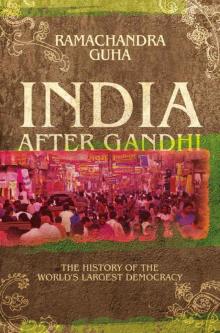 India After Gandhi
India After Gandhi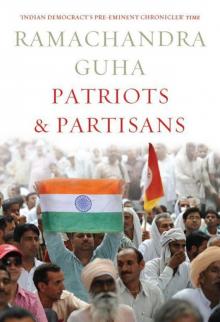 Patriots and Partisans: From Nehru to Hindutva and Beyond
Patriots and Partisans: From Nehru to Hindutva and Beyond